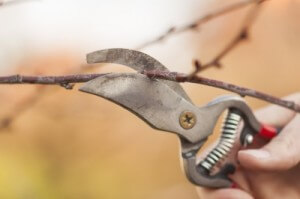We’re lucky enough to live in the South, where “fall gardening” means less preparing plants for the shock of cold weather and more planting fresh flowers. Mums, pansies, and violas are just a few of the beautiful flowers that bloom well into the holiday season down South. But there are a few fall gardening dangers we can’t avoid, even south of the Mason-Dixon line. It turns out the biggest threat to your fall landscape is you . . . and your pruning shears.
Dangers of Fall Pruning
A shocking amount of garden and landscaping blogs fall prey to the old assumption that fall is the time for sprucing, pruning, and prepping next year’s blooms. The reality of the matter is that fall pruning damages plants and makes them less likely to bloom in the spring. Here’s why fall pruning is a bad idea:
- It stimulates growth as plants enter the dormant season,
- It makes plants more vulnerable to frosts and temperature drops
- It confuses trees, flowers, and shrubs about when they should bloom each year
- It removes buds, resulting in fewer, more vulnerable flowers in the spring
The best time to prune woody plants is January-February when plants are fully dormant. Prune plants that bloom in early spring just after they finish blooming.
When to Prune Your Plants
While there are a few varieties of shrubs that should be pruned in the fall (most notably butterfly bushes, knockout roses, crape myrtles, and gardenias), wait to prune the majority of your landscape during the winter. If you must prune trees or shrubs due to damage or disease, limit fall pruning as much as possible.
Just because you can’t prune doesn’t mean you can’t plant. Stop by the Ace of Gray garden center for fall veggies, mums, and other winter-hardy plants for your Gray garden.

